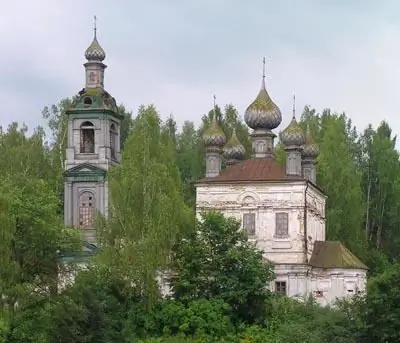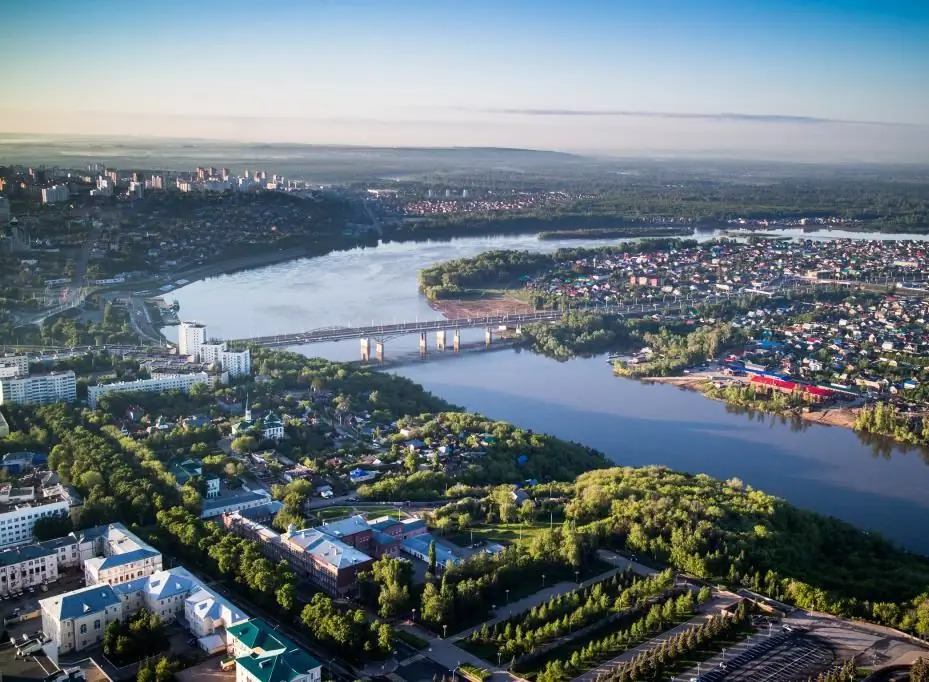- Author Harold Hamphrey [email protected].
- Public 2023-12-17 10:06.
- Last modified 2025-01-24 11:10.
Almost all travelers start their acquaintance with Portugal from its friendly capital - Lisbon. Not all of them know that only 40 km from the romantic European city is the extreme point of Eurasia - the place where the earth ends. This is Cape Cabo de Roca. This is a real edge of the earth, which offers a fantastic view of the endless expanses of the sea. Read more about the cape in the article below.
A little about the history and geography of the cape
The first awesome cape was found by the Romans, who gave it the name Great Cape. During the great geographical discoveries, the name was changed to Lisbon and only after a while to Cabo de Roca. It was only in 1979 that the data that the westernmost point of Europe is located here were publicly disclosed. Since that time, the place has a huge tourist popularity.
The cape, which has a height of 140 meters, is located on the territory of the Sintra-Cascais Park. To get to it, you need to walk along a picturesque winding road. The mountain is very high andsteep cliff.

Being here, you understand why the ancient people respected the cape so much.
How to choose the time to travel?
On Cabo de Roca (Portugal) at any time of the year and at any time of the day you can see tourists. This place is never completely empty. Every season and every day is good in its own way. If you choose the first half of the day for your trip, you can look at the walls of the lighthouse, illuminated by the bright rays of the sun, and also go down to the sandy beach.

Connoisseurs advise coming here in the afternoon to see a fantastic sunset and take beautiful photos. Those who come to the cape at night find themselves in a completely different world. The propeller of the lighthouse rotating overhead seems to take the tourist to a mystical and unknown world. These are very bright emotions! Please be aware that there are no hotels nearby, so if you are traveling without a car, bring a travel mat, a blanket and a thermos of hot drink.
How is the weather in Cabo de Roca?
It's always windy at the extreme point of Europe. The sparse vegetation of the area is also explained by the never subsiding wind. If you want to see the sunset at the cape, bring a hooded jacket, it might rain.
Take into account the strength of the wind when trying to take interesting photos. Be aware that the railings here are not strong enough!

It's not worth risking your life for a photo, a strong wind can easily blow a person into the abyss. AtThis must also be remembered that the strength of the wind at the edge of the earth changes very quickly. A light wind can turn into a squally gust in a couple of seconds, so climbing over the fences in the evening is dangerous.
How to get to the cape?
There are several ways to get to the extreme point of Europe. If you are a tourist who prefers to always have support, then while in Lisbon, purchase a tour of Sintra and Cascais. It includes a drive to Cabo de Roca, but you won't be able to choose the time of day and time of stay at the cape.
The next way is minibus number 403. It follows the route between Sintra and Cascais approximately every 1.5 hours. The method is not so simple - from Lisbon by train you need to get to Sintra or Cascais. Bus stations in both cities are located near the final stops of trains.
How to get to Cabo de Roca by private vehicle? Highway 247 connects Cascais and Peniche. You need to move along it, and the signs are constantly found, it is very difficult to get lost. The road will be picturesque and pleasant: at first, the highway goes along the sea and the beach, then climbs into the mountains, where centuries-old pines, eucalyptus and plane trees grow. After that, you only need to exit the highway down towards the cape.
The main attraction of Cabo de Roca is the lighthouse
The main attraction on the cape is one of the key landmarks in the sea for all sailors in Western Europe - the lighthouse. Historically, the art of navigation and cartography has always been valued in Portugal, so in 1758 the Marquis de Pombal ordersthe Minister of Finance to allocate funds for the construction of six lighthouses. Until that time, lighthouses were only in the south and north of the country, but now it has been decided to cover the west as well.
Cabo de Roca is a rocky cliff, so the lighthouse here was built from scratch. The height of the lighthouse is 22 meters, and its rays send light into the sea for fifty kilometers. Four flashes and a pause - the signal of the beacon remains so to this day. At first, oil lamps were the source of light, but electricity was brought here at the end of the 19th century.

The uniqueness of the lighthouse also lies in the fact that a real caretaker works on it. Such a position exists at 4 lighthouses in Portugal out of 52. The rest is controlled by automation. The picturesque lighthouse is open to visitors on Wednesdays from 14.00 to 17.00, and admission inside is free. It should be noted that it was only allowed to enter in 2011, so it is not known how long the visit will last.
Cape infrastructure
In addition to the famous lighthouse on the top of the cape, there is a padran cross and a sign indicating that you are on the westernmost point of Europe. Every traveler is required to take a photo here. You can also purchase a certificate confirming that you have visited this amazing place.
Description of Cabo de Roca would not be complete without a story about the local (rather meager) infrastructure. After sightseeing, you can visit a café and a gift shop. By the way, here you can send a postcard to friends and family, decorated with a unique stamp.
On a steep and rocky road you can go down to the beach and take a dip inocean. In no case should you use the road during rain or immediately after it - it is very dangerous! There were cases that ended tragically.

If you want to bring a truly authentic souvenir from the ends of the earth, then buy it not on the cape itself, but in the town of Azoia. In addition to porcelain figurines of lighthouses, they sell real Portuguese handmade dishes and marine-themed souvenirs. You can also try local, rather interesting drinks.
Where to go after the extreme point of Europe?
If you are a zealous traveler who does not stop at visiting one interesting point on the map, go further. After Azoia, the road opens the way to various interesting places that surround the cape. Turning left will bring you to Sintra with its remarkable palaces and castles. On the way to the right is Cascais, which is famous for its casinos and nightclubs.
Lovers of elite beaches and surfers can stop at Guinshu. Nearby is the only hotel-restaurant in the country, which has two Michelin stars. Moreover, it is located in an ancient fortress of the 17th century with a wonderful view of the ocean. If you are a lover of silence, then go to "Apple Beach".

Only a traveler who is not afraid of difficulties, inhospitable rocks and winds will dare to visit the westernmost point of Europe - Cape Cabo de Roca. But, having been here once, you will never forget this place!






